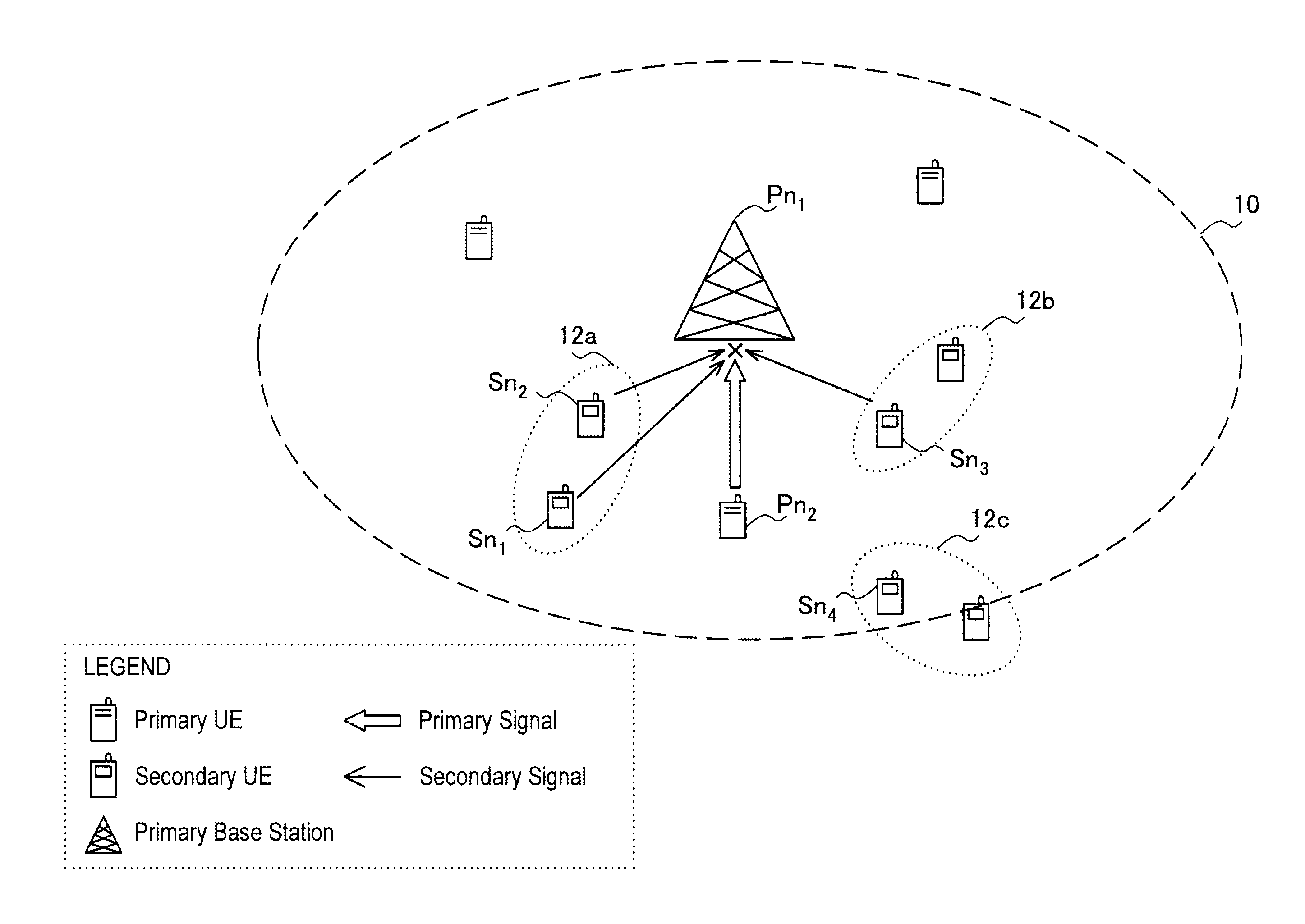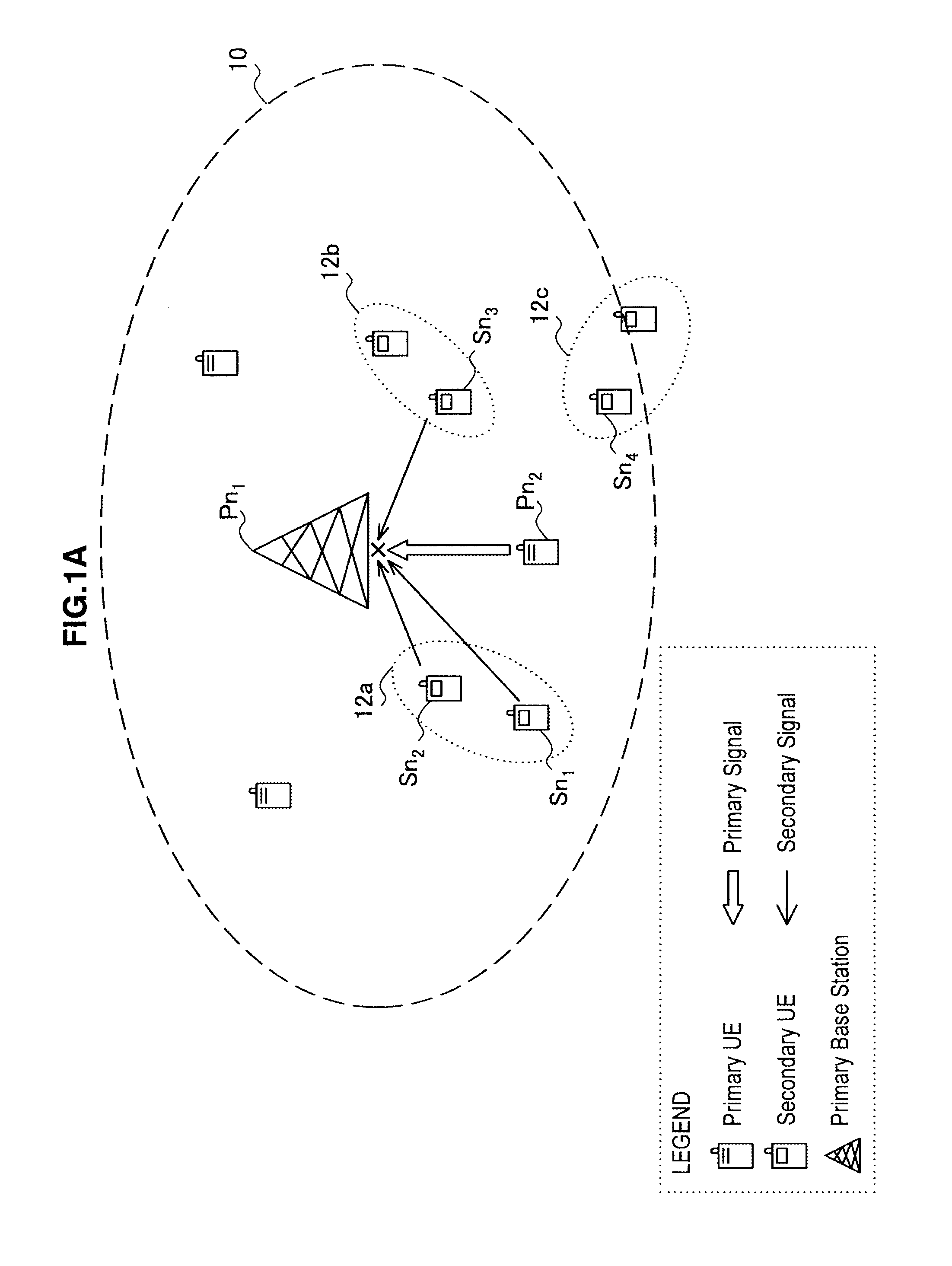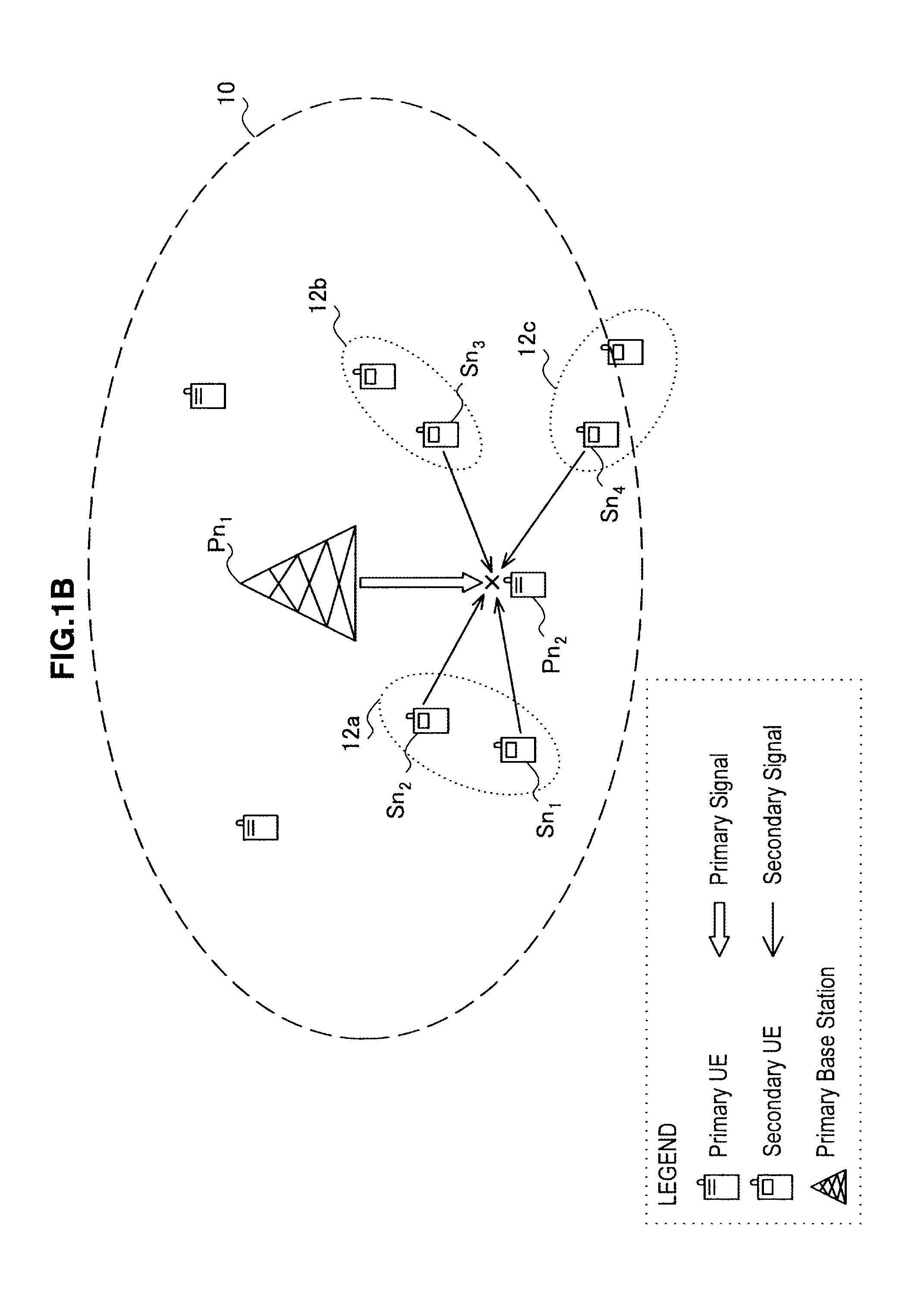Transmission power allocation method, communication device and program
a communication device and power allocation technology, applied in the direction of transmission monitoring, power management, electrical equipment, etc., can solve the problems of limited actual opportunity of use, difficult to receive a radio signal (primary signal) locally in one primary usage node, etc., to achieve the effect of reducing interferen
- Summary
- Abstract
- Description
- Claims
- Application Information
AI Technical Summary
Benefits of technology
Problems solved by technology
Method used
Image
Examples
first embodiment
[2-1. Overview of Communication System]
[0119]FIG. 4 is an explanatory view to describe an overview of a communication system according to a first embodiment of the present invention.
[0120]FIG. 4 shows a primary system 102 that operates a first communication service and secondary systems 202a and 202b that respectively operate second communication services. The primary system 102 includes a management node 100 and a plurality of primary usage nodes 104.
[0121]The management node 100 is a primary usage node that has a role to manage secondary usage of the spectrum assigned to the first communication service. Although the management node 100 is a base station in the example of FIG. 4, the management node 100 is not limited thereto. Specifically, the management node 100 may be a primary usage node different from a base station, or it may be another node (e.g. a data server etc.) that is connected to a base station by wired or wireless means. In this embodiment, the management node 100 ca...
second embodiment
[0174]In the first embodiment of the present invention, transmission powers allocated to the second communication service is determined by the primary usage node (management node) which is accessible to the database that stores the location data of the primary usage node. This is a passive technique from the viewpoint of the terminal device (UE) that makes secondary usage. On the other hand, the terminal device that makes secondary usage may acquire necessary parameters and determine the acceptable transmission power for the second communication service in an active manner. In this section, a case where the terminal device that makes secondary usage actively determines the acceptable transmission power is described as a second embodiment of the present invention.
[3-1. Overview of Communication System]
[0175]FIG. 10 is an explanatory view to describe an overview of a communication system according to the second embodiment of the present invention.
[0176]FIG. 10 shows a primary system 3...
PUM
 Login to View More
Login to View More Abstract
Description
Claims
Application Information
 Login to View More
Login to View More - R&D
- Intellectual Property
- Life Sciences
- Materials
- Tech Scout
- Unparalleled Data Quality
- Higher Quality Content
- 60% Fewer Hallucinations
Browse by: Latest US Patents, China's latest patents, Technical Efficacy Thesaurus, Application Domain, Technology Topic, Popular Technical Reports.
© 2025 PatSnap. All rights reserved.Legal|Privacy policy|Modern Slavery Act Transparency Statement|Sitemap|About US| Contact US: help@patsnap.com



